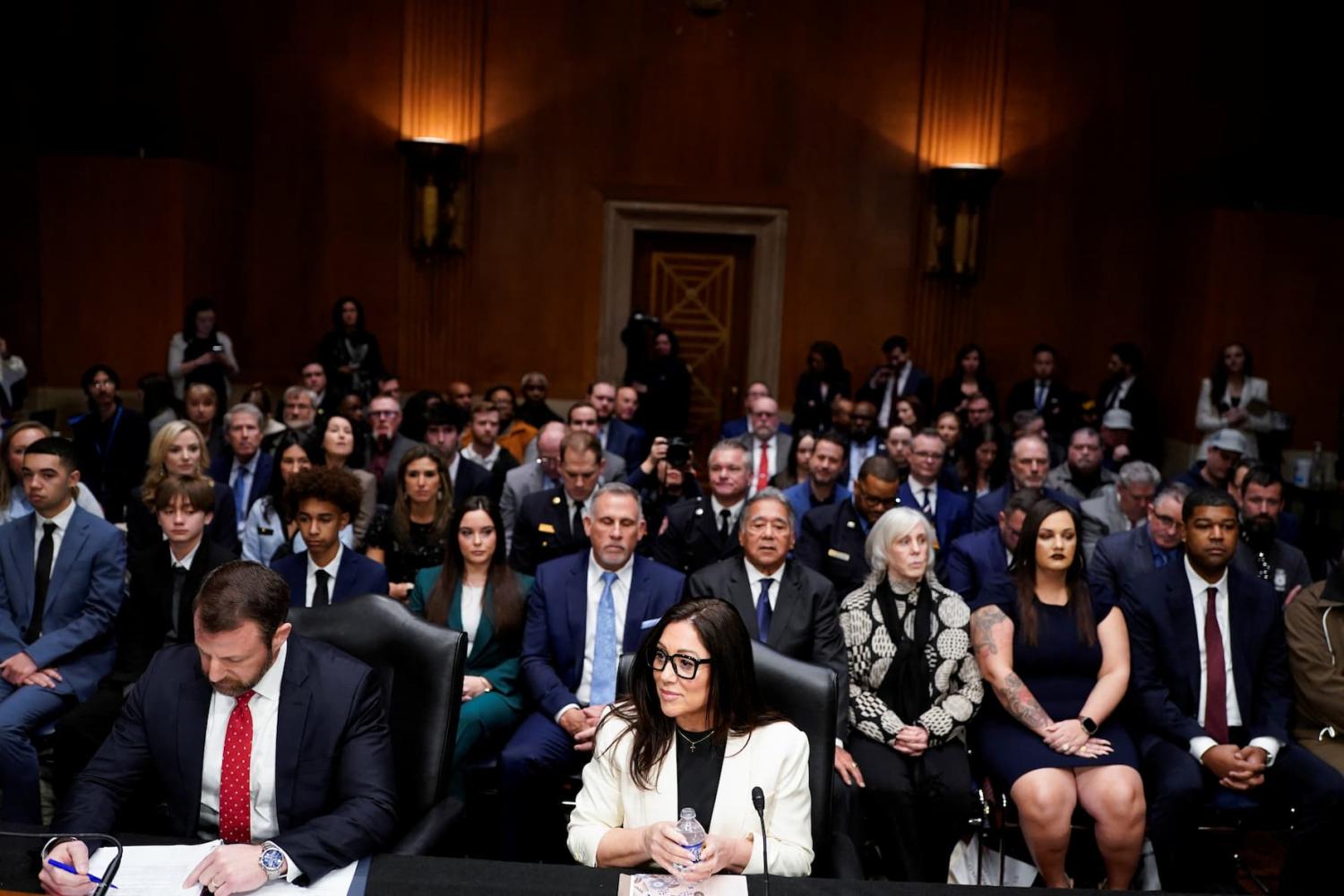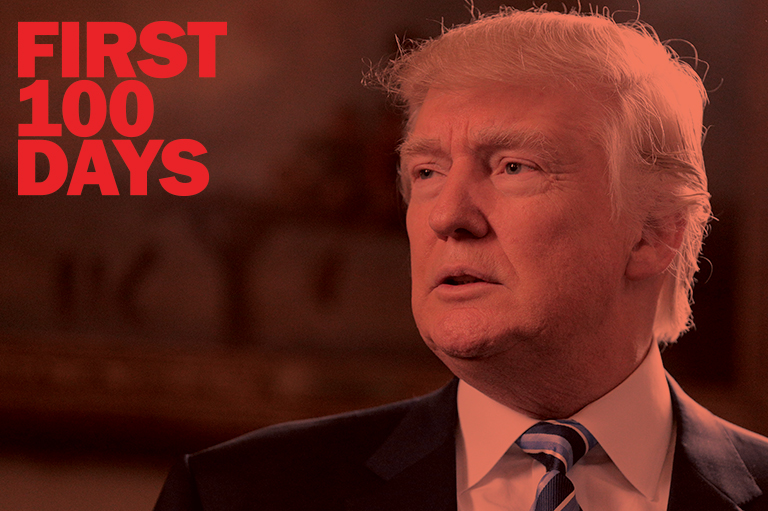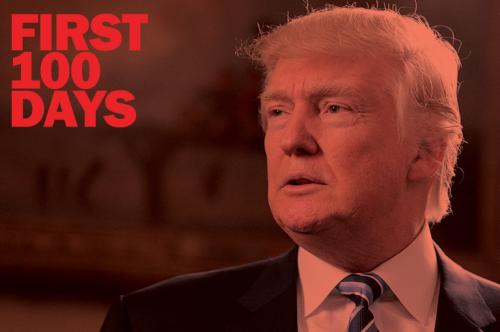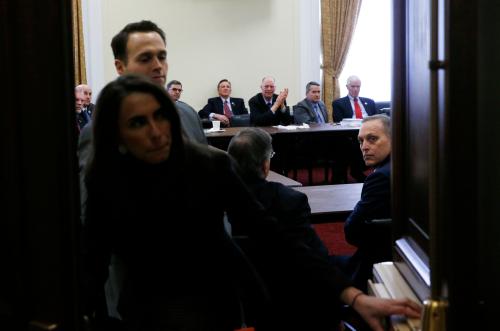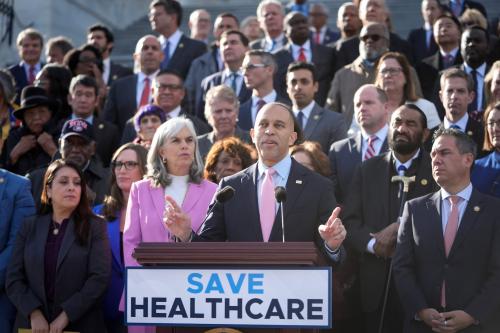This blog analyzes data from “Tracking President Trump’s second-term Cabinet and appointees,” by scholar Kathryn Dunn Tenpas. View the tracker here.
The president’s first 100 days, a benchmark popularized by President Franklin D. Roosevelt, provides an opportunity to take stock and evaluate the early direction of a new administration. In the aftermath of a presidential inauguration, the nomination and confirmation of cabinet officials is the highest priority. Placing senior appointees at the helm across the federal government allows the president to steer the ship of state in his direction.
Fresh off his victorious campaign, President-elect Trump began announcing senior White House staff and Cabinet appointments, some of whom were deemed controversial. Despite the relatively quick tempo of staff announcements, an incoming president typically lacks the power to hasten Senate confirmation of his top picks. The Senate was designed to be a deliberative body and runs on its own schedule. For example, during President Trump’s first 100 days, the Senate was only in session for 55 days. Scholars have noted that the confirmation process takes nearly three times as long as it did during the Reagan administration.
This analysis examines the pace, as well as the gender and ethnic composition, of Senate confirmations for positions in the 15 major cabinet departments and compares the outcomes for the second Trump administration to his predecessors going back to George W. Bush (2001). I relied on the website Congress.gov to obtain data on Senate confirmations and conducted additional online research to locate demographic information about these appointees. The data include all Senate-confirmed positions to the 15 departments in the line of presidential succession and exclude U.S. attorneys at the Department of Justice. We’ve been tracking these developments in a running database of Trump’s second-term Cabinet prospects and appointees.
Pace
President Trump’s appointees were confirmed in the Republican-controlled Senate at a pace that surpassed three of the past four administrations including President Trump’s first term. The second Trump administration more than doubled the number of confirmations during the first term when only 19 appointees had been confirmed. Perhaps the advance work of the Heritage Foundation’s Project 2025 and America First Policy Institute (staffed by many Trump alums) coupled with an experienced transition team (many of whom served in the first term) resulted in the uptick. The difficult experiences of the first Trump administration coupled with a more organized, experienced transition team may have paved the way for a speedier nomination process emanating from the White House and thereby improved the prospects of confirmation. Regardless, this represents the second largest number of confirmed nominees going back to 2009 (President Obama had 63 appointees confirmed during the first 100 days.)1
Gender makeup
In the first 100 days, President Trump’s confirmed nominees included the lowest percentage of women for the most senior executive branch positions (16% female), compared to the prior four administrations. In addition, the gender makeup of Trump’s confirmed nominees is 10 points lower than his first term record. Given the Biden administration’s more explicit focus on diversity, it is not surprising that the data show a marked drop compared to the Biden administration record that approached parity with 47% women at the 100-day mark.
Ethnic breakdown
The data below demonstrate a decline in ethnic diversity during the first 100 days of President Trump’s second term, with 16% classified as non-white. This is a nine 10-point drop from his first term in office when 26% of Senate-confirmed appointees were non-white.
Ethnicity
Following from Figure 4, analyzing ethnicity (utilizing the U.S. Census categories), President Trump’s Senate-confirmed nominees are less ethnically diverse than their predecessors in the four prior administrations.
Clearly the 100-day mark is a brief period, yielding a small sample size of confirmed nominees. Nevertheless, the trends apparent at this early stage may be enduring, particularly if GOP control of the Senate continues after the 2026 elections.
President Trump has had a major advantage in the confirmation process with 53 Republican senators. It allows for some defections but to date has not resulted in a defeated nominee or high-profile nomination withdrawal other than the short-lived intention to nominate former Rep. Matt Gaetz (R-Flo.) as attorney general. In addition, Senate Majority Leader John Thune (R-S.D.) has been able to maintain enough party discipline to get even the most controversial nominee (Pete Hegseth—the only nominee that required Vice President Vance to cast a tie-breaking vote)—over the finish line.
In addition, and in stark contrast to President Biden’s push for diversity, President Trump’s ending of DEI programs across the government and the private sector is similarly reflected in the composition of his first set of confirmed nominees. Even compared to his first term in office, President Trump has appointed fewer women and fewer non-white individuals, demonstrating the consistency of his commitment to eliminate DEI programs across the government.
The Brookings Institution is committed to quality, independence, and impact.
We are supported by a diverse array of funders. In line with our values and policies, each Brookings publication represents the sole views of its author(s).

